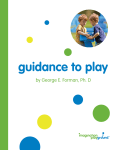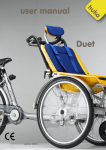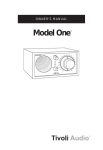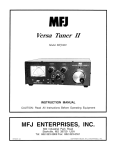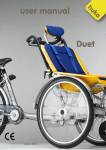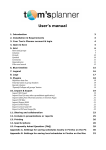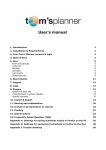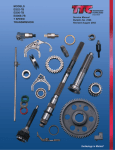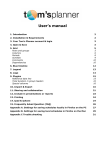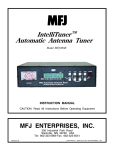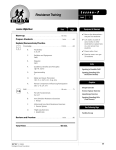Download the full PDF of "guidance to play"
Transcript
guidance to play by George E. Forman, Ph.D Copyright © 2011 Imagination Playground, LLC. All Rights Reserved guidance to play by George E. Forman, Ph.D Copyright © 2011 Imagination Playground, LLC. All Rights Reserved an introduction to the guidance booklet George E. Forman, Ph.D. Emeritus Professor, University of Massachusetts, Amherst President, Videatives, Inc. these 20 topics will help you see the significance in what children are doing as they play with the Imagination Playground Blocks. It is important to recognize incidents when children are doing something clever, creative, collaborative, complex or classic. These are the times you want to protect the children from distractions, support them with a little extra effort, or perhaps create a small problem for them to solve once you figure out their level of competence. each topic has four sections 1. The first section describes a specific type of play. The photographs will help you recognize each type of play when it happens, but realize that the specifics of what you actually see may vary slightly from what is written in the booklet. Think about the children’s intentions. 2. The second section “What it Means,” will help you figure out what is challenging, complex, or creative about what the children are thinking. What problems of construction, collaboration or pretense must be solved in order to maintain or extend their play? Use this section to answer parents who ask, “What is my child learning?” 3. The third section, “What You Might Do” gives you general guidance on what to add, how to co-play, and what to say in the background. For example, it is often more effective to make statements about the children’s strategies and goals rather than to ask, “What are you making?” This section will also give you suggestions on how to rekindle play if the children’s energy has somewhat declined. 4. The fourth section, “Children of Different Ages,” will help you identify the challenge and complexity of play across the age span. This should help you adjust your support accordingly and be more helpful when parents ask about the significance of what the children are doing, even when the play looks minimal at first glance. When adults are present, note their form of involvement. Be careful not to assume that adult intervention will be negative. In many cases the adult can save the moment, giving support to the base block of a growing structure, going afar to bring back a block the child is missing, and wondering out loud with the child to help her reflect on what might happen next. Even a simple move, such as an adult inverting a curved block so it rocks on the ground, might ignite a whole new form of play from an observant child. Have light and friendly conversations with the adults on the playground. Explain to the parents one or two of the guidance topics when you see a matching form of play occurring. 4 imagination playground blocks and loose parts Now a word about the advantages of loose parts in contrast to jungle gyms, seesaws, and slides. The foam blocks in combination with found objects such as plastic tubes, fabric, and large props become a medium for creative expression. The large-scale blocks can be arranged and rearranged to define spaces, objects, and games. But the parts are not simply loose. They fit together in ways that allow the continuation and extension of a basic idea. A pair becomes a wall; a wall becomes a room; a room becomes a house. The other objects become accessories and accents such as a chimney for the house or a curtain for the kitchen. The found objects you choose to integrate with the Imagination Playground Blocks will depend on the play surface, the age of the children, and the frequency of their visits. Have a reason for adding found objects, such as large hats to make the tall blocks look like people or plastic pipes to make a better pivot for the hinge blocks. sand and water elements Sand and water might enhance the play with the Imagination Playground Blocks, but be alert to how sand and water can dominate the children’s attention. Note that the information in this booklet is there to help you figure out how to better use the foam blocks as opposed to how to set up play spaces in general. You need a contained space for sand and good drainage for the water. And usually it is better to anchor the water source rather than use a garden hose that can go places it is not wanted. Making a garden hose that pivots and slides on a vertical bar allows for rich problem solving, such as “How can we get the water to flow down the blocks in two directions?” or “How can we get the water to flow all the way to that spot over there?” be safe Please be mindful that Imagination Playground Blocks are play products intended to be used under supervision of adults or Play Associates who have taken an Imagination Playground training session and read the User’s Manual. The blocks should not be used to construct stairs or platforms that children can stand on or jump off. Attention should be paid to the use of found objects such as PVC tubes that could cause injury if used too aggressively. Be familiar with your site conditions and the appropriate safety measures. enjoy your time on the playground Take notes and use these topics or topic numbers as a short hand to remember what you saw. You will find that the more you understand the significance of what you see, the more you will value the work you are doing and the better you will be able to co-play with the children when the opportunity arises. These materials are unique. You will have many delightful surprises as you witness the creativity of children. Remember to share your observations with others. As you step back and observe, you will realize that it’s not just play. 5 arches, lintels, and windows 1 Children see an arch as an invitation to walk through the vacant space. If there were only two vertical blocks with a space between, the children probably would not play this game. Making a doorway using a lintel (the top block that lies across the two vertical blocks) requires some thought about spacing and support. As you see here, arches contain enough complexity to elicit cooperative play. This arch was created in the unusual manner of leaning two curved blocks together. This method will work only if the blocks do not slip outward from the pressure of leaning together. This arch requires some understanding of two counteracting pressures. 6 what it means It is no small problem to figure out how to make an enclosed vacant space in a vertical structure. The window, door, or arch is bounded on all sides yet remains vacant in the middle. It is much easier to make a stack or a solid wall. These openings can become a focus of play, such as the port hole on a ship or a space were the inside person can talk to the outside person without letting the outside person in (remember the Emerald City gate keeper in The Wizard of Oz?). Be alert to the particular arrangement of the blocks to make a window. In the most advanced way the children will stagger the alignment like in the above diagram. what you might do As in most situations, first watch and feel the focus of the children’s goal to make arches and doorways. At times you might sense the child is just about to give up. You could help by steadying a wobbly block or moving a longer lintel close to the child if his block was too short. If a free-standing arch has been built but is not currently used, put something fun on the other side, like a ramp for ball play. The arch becomes a presentation to the other play space and no longer stands isolated. Starting from something as simple as the arch, the children might create extensions of the arch or think that the play space also needs an escape archway in the back. Doorways provide children with an implicit instruction on how to navigate and use space. children of different ages Two-year-olds may find crevices and spaces to enter but will not make a well-formed arch or window on their own. Nevertheless, body-sized empty spaces to a young child has the same appeal as a slightly opened cabinet to a cat. They will want to know, “what is in there, can I go through, does entering the space make my parents smile or call my name?” They explore what can be navigated in both expected and unexpected paths. The older children will become interested in the engineering of these enclosed yet vacant spaces. They will go through trial and error to get a hole where they want it. Here you will see the advantage of the foam blocks that can be toppled without consequence when children want to destroy and try again. Still older children will move from the sheer engineering of these spaces to decisions about how many spaces, where, and for what purpose. A castle wall may have both a window and turrets (gaps with no lintels as in the second graphic above) and these architectural differences will have to be negotiated and explained in terms of their purpose. George E. Forman, Ph.D 7 enclosures, boundaries, and barriers 2 The blocks can define the social use of space, such as inside for club members, outside for non-members. More open enclosures could mean more open membership. Tall enclosures give children the opportunity to get away from the noise or to deliberately hide and pop out as a game with their peers. With so many blocks the children can make boundaries for really large areas. While this may be a type of territorial behavior to claim the most space, it could also be part of a game that requires the children to mark the outof-bounds areas. 8 what it means Children naturally create more intimate spaces within large open spaces to find privacy, or make bounded spaces that define “being in the play” or not. Without the ability to expand or contract these spaces with moveable parts the children would constantly have to accommodate to the size of a jungle gym or the existing sand box. But the moveable parts afford the children an opportunity to negotiate with each other about enlarging the boundaries if the group gets larger or dividing the space if the group gets too mixed, e.g. younger children here, older children there. These boundaries serve as a “memory” for the rules the children create and parts of the laid out spaces give status, such as the cockpit for the pilot versus the spaces behind for the passenger. what you might do Take a few notes on how the children define and use these bounded spaces. If you notice a group of children repeat a layout across a day or two, you might allow them priority for the parts they normally use by setting some aside for them. If new children compete for these parts, your role could be to help the old group make compromises in how to lay out their spaces, but still, somehow, satisfy the function of these spaces. For children who use enclosed spaces to hide, see if you can figure out if this is out of a need to get away from the crowd or a way to entice a friend into the tight space. If the former, support this need. If at times the children’s play hits a lull, use your understanding of enclosures to get things started. Lay out some inviting enclosures in advance or rooms within rooms. children of different ages For twos and threes the whole block defines a space, such as something to stand on or lift. This object can afford social relations with another child as one child invites the other to “do as I do.” The use of the space is defined by the shape and weight of the block. Slightly older children will be intrigued with spaces that have a definite inside and outside, or even a my-side and your-side. Even a low wall affords a game of detour and going around the wall. Children understand how their layouts affect the traffic patterns of other children and will make decisions that create structures more and more complex as they play with these blocks. As children become more group-oriented their layouts will support social dynamics, such as membership or status. This can be done with full enclosures or even “secret” entry ways that require passwords. While this might seem exclusionary to other children, it could present an opportunity for children to deal with issues of fairness, or at least reasonableness. George E. Forman, Ph.D 9 bringing fabric into play 3 Children drape a light fabric over some stacked blocks creating a cozy little club house. Once the roof is in place they furnish the house with things to sit on and rest on. The teachers make decorative netting material available in a box. Several girls thread the center hole of the gear part with the fabric to give their tower a decorative top that picks up the flow of the wind. These three girls are pretending to be doctor, nurse, and patient. The blocks are the bed and the red fabric serves as the bed sheet. The fabric allows them to role play themes that involve covering, such as being so sick you have to remain under the covers. 10 what it means A sheet is a large flexible plane. It can cover large irregular openings like the top of a fort with turrets. Sheets also billow and flutter with the wind causing thoughts about sailing by making the wind visible. Fabric strips can decorate, but can also be used to tie two blocks together or make a long chain of these blocks so those blocks can be “owned” by one person. Fabric adds motion to a structure, adds different colors to a pattern, and masks components of a structure that the children want to hide. Once, a large group of children re-enacted the unveiling of a public monument by draping a sheet over a block tower then pulling it off with fanfare. These potentials make fabric the perfect complement to the rigid blocks. what you might do Fabric at first might seem foreign and irrelevant to the foam blocks because it is so different from the blocks. If you have a new set of children, prime the playground by using the fabric as a roof or netting material to make a structure look like a huge present, or as a whimsical accent to a temple-like structure the children made and left. Once the children’s conversations and work start to include the fabric, you can back away. If you bring in new fabric, think of the advantages of different shapes and types—long narrow strips, short narrow sheets, patches of funny shapes, and material of different types, even leather. An unusual piece of cloth could be just the prop to get a child inventing scenes in a pretend episode. children of different ages Children of two or three years will prefer smaller swatches of fabric to use, such as the right amount to wrap a baby doll in a pretend baby blanket (see topic #16 on cylinders), or to hide under for peek-a-boo play with a parent. The blanket already has a function and it is harder for younger children to invent new uses of fabric not usually assigned to it. Older children might pretend play with fabric. A hanging sheet is a pretend wall to breach. A narrow ribbon of fabric will be used to wrap a giant size present and swatches of colored fabric could be stepping stones to a block structure. The still older children may show less interest in the fabric, unless its surface area is very large. These children will realize how fabric can easily cover even irregular structures. The fabric actually lets them create a roof without having to figure out the architectural design that would be required to hold up a roof made of blocks. George E. Forman, Ph.D 11 featuring little cheese 4 12 P1 P2 P3 P4 P5 P6 You will see the Little Cheese mentioned in other sections, but here we summarize its various roles as a core, a wheel, and a symbol. These photos show these roles. what it means The Little Cheese is disc-shaped and thick, with holes around the rim, and two holes in the circle, one in the center, one off-center. Given these specifications this piece can function to integrate parts attached to it (P1 and P2), or to become pretend objects like a lollipop (P3) or water canon (P4), and because it is round can function as wheels (P5 and P6) or a wind mill. The off-center hole was deliberately cut to create surprise and innovations, such as a wagon that lopes, limps or rocks. what you might do You may find that many children want to use the Little Cheese blocks. If this happens on successive days you may decide to put aside a set for later arrivals, or ask the children if they could work with these blocks in shifts. The Little Cheese blocks are like a vase to flowers. They hold things together and allow children to create structures otherwise impossible. And because they have these multiple uses, you can help children get out of a rut by making something with them that they have never seen before. This helps children realize that one object can have multiple functions. If you do this, place your creation in view but off to the side. Notice if the children try to turn a part on your structure, smile at it, try to duplicate it, or just disassemble it for parts. children of different ages For young toddlers, the Little Cheese might not be as attractive as the Nickel, which is more their size. If they are interested in the Little Cheese, it will probably be the holes that they notice (see topic #18, The Whole of Holes). They can be enticed to roll it like a bowling ball if someone models this for them. The older children will read this block as the integrator that it is, like the hub block in a set of tinker toys. They may treat it as a seat or step and eventually as a symbol (P3). In rare cases they may sit on the round rim to test their balance. You will certainly see the noodles stuck in the Little Cheese blocks, but the stiff cylinders will probably be used by the still older children, particularly the boys who are known to make forts or tanks with gun turrets. Since the Little Cheese has holes all around its rim, expect to see the noodles bent into loops anchored at both ends. Note any exceptions to this convention that lead to more whimsical, asymmetric structures. For the still older group, the Little Cheese will be read as a part that can turn on a plug, thus opening the surprise of the off-centered hole. George E. Forman, Ph.D 13 gear to gear play 5 Children interlock a set of gears and place them on top of a structure as an ornamental top. The gears do not rotate but they do represent the way blocks can grip each other. With some adjustments, water poured down the chute might turn this gear, giving children experience with how a liquid current can transfer motion to the solid gear. These children understand that one gear can turn another if the two gears are positioned correctly and the axles are strongly fixed in place. This is not an easy structure to figure out. 14 what it means The two types of gears afford rather different problems to solve. The Plus Gear and Clover Gear interlock and entice the children to make a giant jigsaw puzzle or tightfitting wall as you see in the top photo. However, these two gears are not well matched for one turning the other on adjacent axles. Two Plus Gears can turn each other if positioned correctly as you see in the bottom photo. If children were to make a row of gears, they might be intrigued by the way the first, third and fifth gear in the row turn in the same direction while turning in a direction opposite to the second and fourth. When children use the gear as a water wheel, they read the gear as “water catcher” instead of a “gear turner.” Listen to their words to hear the difference between a gear pushing something versus the gear being pushed. what you might do In general, you can make summary comments without asking questions. Make sure other gears are available if laying elsewhere unused. From time to time create a structure with gears before the children arrive. You might use some PVC pipes to make gears in a row such that one turns the other. You might station a water wheel on PVC pipes in a water chute that has lost its appeal. If the children are already using the gears as symbolic objects such as crowns or flowers, that’s okay. But you might make a similar structure, such as the flower, and spin your gear on the stem just to see if this gives the children any new ideas. If there is water nearby, try wetting the round edges of a Clover Gear and rolling it across concrete. If the conditions are right, the gear will make little footprints on the pavement. Perhaps the children will be intrigued by how the footprints are always the same distance apart. It is okay if they are not, but you have at least opened them to the idea of rolling, which is not the same as rotating in place. children of different ages At two or three years, children will be more attracted to the hole in the gears. They will put it on their hand, augmenting their own body, like a huge bracelet. Once they have explored the hole they may try to roll the gear on the ground. Eventually the children will read the gear as something designed to be turned on an axle by an outside force, such as one’s hand, the wind, or the water. Then comes the idea of relating gears to each other. The first form of gear-to-gear play could be to make stationary walls or puzzles, but this requires mixing two different gear types, and children might prefer to play with just one type at a time. Finally, the children will discover how one gear can move the other. As mentioned, the gear-turning structure has complicated construction requirements for making the gears both interface and turn. George E. Forman, Ph.D 15 hinges and pivots 6 Using two Squeaky Hinges as bookends for an axle, this boy makes a block that can swing back and forth. While he may not have a plan for its use, in play, building the structure often comes before discovering its use. These two girls made a seesaw from a Primary Block using a plug as a pivot. Unlike an ordinary seesaw, this one can roll both forward and backward as well as go up and down, adding more fun and challenge to the play. Here a plastic pipe fits two Squeaky Hinges together. The smooth and rigid pipe makes it easy for the children to pivot the foam block to open the pretend door or gate. 16 what it means Think of how long it took the human race to invent the lever, the balance beam, or the door hinge. (Of course, early humans did not have Imagination Playground Blocks). These simple devices, hinge or pivot, allow a door to move without falling out of the frame, a lever to catapult an object with extra force, or a balance beam (scale) to determine if two weights are equal. As in Topic #9, Parts that Move, these structures require a new way of thinking, the paradox of something that is stationary but nevertheless moves (pivots, rotates, or swings). So be on the alert when children reinvent a functioning hinge or catapult. For the hinge, the hardest part is building the supporting frame. One has to be anchored well for the other one to move alone. what you might do Since hinges that work require solving some difficult problems, you might build one or two and just leave them somewhere on the side. The creativity of the children can enter as they integrate the hinges into larger structures. If you have repeat visitors, you might see if the children build working hinges on their own. For pivots, which are easier, you could prepare the play space by laying one or two Plugs horizontally on the ground with some Long Blocks nearby. These layouts could catalyze the play. Do not fret if the children decide to use the blocks in some other way. The outcomes do not matter. Just be there to support all creative efforts and inventions for structures and games you had not yourself imagined. children of different ages The young ages may use the Plug as a big roller without making a seesaw or catapult. This should be considered a first step to understanding pivots. The younger children may want to put a Small Plug into the hole atop the hinge block, but it is doubtful they will think to add another hinge block to the same Small Plug. Slightly older children will figure out that the Squeaky Hinge blocks are cut specifically to be joined as depicted in the above diagram. The Small Plug may be used just to keep them together, for example, to make a v-like peak to the top of a hut without making a moveable hinge (which will happen in the oldest group of children). You might see a catapult built by even the three-year-olds who will put a Nickel block on the down end and stomp the up end launching the Nickel skyward. Watch for some confusion regarding where to put the nickel, on the up end or the down end of the long block resting on the pivot. George E. Forman, Ph.D 17 parts as furniture 7 Girl makes a lounge chair using two Arch Chutes and some Primary Blocks. The foam is actually quite comfortable and the scale is perfect for her height. She added parts until it felt just right when she lay back. These three-year-old girls use the cylinders as a sort of lap rail, similar to the bar in a car seat or amusement ride, as if the foam makes them feel secure and nestled in together. Using some mats, Primary Blocks for pillows, and noodles anchored in the Little Cheeses, two girls have a “sleep over” in a life-size double bed. 18 what it means The large scale of the Imagination Playground parts affords an entirely new category of play—building body-sized furniture and equipment. The cushion of the foam often suggests objects for rest (beds, chairs, lounges). But as you see in Topic #10, Wear and Wield, a child also can make gym equipment. The fun comes when you try the structure on for size. The children work to adjust the proportions of their structures to fit the proportions of their body. This work increases the body awareness that is important in many activities. And while building the structures may not require measurement, it certainly involves judgments of equivalence, e.g. is the bed long enough for my height, does the curve of the lounge hit the curve of my bottom, if my arms hang uncomfortably I should I add arm rests. what you might do Once you see children using the large-scale blocks as furniture or equipment, think about what accessories would maintain this interest or extend the play value of these structures. A chair might need a lamp made from the loose parts. A bed might need a table. You could say, “Hmm, nice bed, but what if I wanted to have my breakfast in bed?” or “Nice lounge chair, but what if I wanted to change the angle of the back?” The children, of course, might ignore you, but you have still planted a seed of an idea. Also think about how one piece of furniture could relate to another. Is the chair too big for the table? You could say, “Hmmm, I don’t think my legs will fit under your table when I sit in the chair.” In general you are sensitizing the children to problems, but you are not giving them the solutions. And again, if they don’t see these things as problems, that’s their choice, too. children of different ages Two and three-year-old children love the large scale of these parts. The Imagination Playground Blocks are light, firm, yet cushioned. Younger children learn to sit, lay, and drape their body on them. They may not make a composite structure using several parts, but nonetheless will treat the blocks as something to hold, cradle, or support the body. The older children begin with simple structures, like two blocks at right angles to make a chair. But once they actually rest on the structure they discover how it could be improved. The backrest needs more support; the table needs to sit six; the seesaw needs handles. These accessories come both from a pretend theme and from physical events, such as the back rest falling or the seesaw feeling scary. Watch how the older children compare their structures, almost competing for which structure is the best. Listen to the criterion for what they think makes a structure better, such as the furniture is more comfortable, holds more people, or is more recognizable as a chair versus a sofa versus a bed. George E. Forman, Ph.D 19 parts as path or course 8 The long curving blocks make interesting paths for a ball. The children can alternate the curves to see how the overall path changes when that rule is applied, or when variations of that rule are applied and result in a closed loop. Children weave their way through the vacant spaces between the many blocks placed over a wide area of the playground. With these large blocks children can design challenging structures that allow multiple players to follow the leader. 20 what it means Since the parts are moveable, children will naturally create all sorts of boundaries, paths, and obstacle courses. It is interesting to watch how the children will deliberately make an activity more challenging by expanding the distance between “stepping stones” or raising the bar on a hurdle. Also note how the children designate a clear finishing point to avoid confusion. These games create opportunities for the children to negotiate rules among themselves—what constitutes a successful finish or a winning run. Some of the paths will just be paths and the intrigue comes from not knowing in advance exactly where you will end up, like weaving through the empty spaces of an accidental maze. what you might do If the activity becomes rather organized you might be asked to serve as the one to signal the start of a race or judge compliance with a rule. Let these ideas come mostly from the children and be sure to use the most literal interpretation of the rules they suggest. If the rules of play become confused, the action of the play should reveal the flaw in the rule rather than the words of an adult. If you see that a small child needs help, offer your hand on the balance beam and allow the child to accept your offer. If you remember a group of children who like to set up a particular game or course each time they come, ask them if they want you to write down the rules. Don’t hold them to the rules but just wait to see if they ever want to reference what you have written. You could add a ramp, branch, or tunnel to make the path more interesting if the children have left it, but be careful not to build while they are using the path. children of different ages With mixed ages, the younger children will no doubt want to walk on the block path as do the older children. Try to judge if they have sufficient body awareness to know what they can do. Also, note that they may be just as content remaining in some of the vacant spaces because these spaces are cozy. As the children get older the rules become more complicated. Listen for the difference in a rule and a strategy. A strategy is something you might do, such as, “start on your right foot,” but sometimes children confuse a strategy with a rule and say, “you have to start on your right foot.” In the same vein, having an objective is not the same as using a rule. The older children will probably bring up the issue of different rules for different ability levels, such as, “Let the little guy go around the hard part.” Think about the complexity of the path and how well the children anticipate which way to go. Does it bother them if they come out some place they did not expect? Treat that awareness as a mark of their intelligence. George E. Forman, Ph.D 21 parts that move 9 Young girl discovers that an Arch Chute upside down makes a great rocking horse. To sustain her interest she will probably pretend to be riding a horse or a rocking boat. The Gear can make a turning wheel over a chute. The fit on the axel is rather tight. In water play this Gear might work better as a gate to change the amount of water that flows down the chute, as opposed to a water wheel that freely spins. Using the Little Cheese and Plug parts, this boy made a car. The wheels turn as he pushes the car forward with his feet. This car is an advanced use of moving parts since the structure more than looks like a car; it works like one as well. 22 what it means All of the parts can be moved, but some parts can rock or roll or pivot in predictable ways. These movements add function to the form. A gear on a cylinder becomes more than a look-alike flower. It can rotate and become a grinder. When children add function to form they begin to see the form in increasingly creative ways. Consider a hinged block that moves in a wall as a door. Compared to an open hole in the wall, the open door means, “I am open now but I could close at any time.” An open door is a special opportunity to enter, more so than an open hole that is always open. Since the closed door looks like a solid wall, the child can pretend it is a secret passage. The potential movement of parts adds interest and story to the child’s play. what you might do If you see children joining parts to make them rock, rotate or roll, just watch at first. Consider what the final construction will most likely be. You might need to help the children find missing parts. If the construction is done, you could lay out some other parts that would expand the use of the structure, such as casually putting a plug upright while saying, “I’ll leave my stop sign here” (near boy on car) or “Has your horse gone to sleep?” (near girl on Arch Chute). If no one has discovered the fun of parts that move, idly spin a gear on a plug, or rock an inverted chute with one finger without any particular invitation to the children. Let them either see the value in this action or not, depending on their age and interest. It is also a good idea to test the tightness of fit of plugs in holes to see if the block could turn easily or is too tight. Weather conditions could make a difference from day to day. children of different ages At the youngest ages, children will be more alert about how single objects move, the rolling wheel and plugs, the rocking chute, and making the noodles bend back and forth. You may see them simply explore these actions rather than inserting parts to rotate in a moveable joint. The next stage could be simple joints that create new composite forms but are not played with or talked about as a moving joint, such as putting plugs in holes to make arms for a robot or two hinges joined to make an adjustable A-frame peak. The part movements are used more for quick changes in the structure’s shape rather than to do work. As children get older and work more with the blocks, they will invent simple machines or animals with moving parts, such as a neck that moves for a grazing giraffe or wheels that roll across the ground. The movements have a function, a purpose (pretend or real) beyond simply providing a convenient way to change the shape of the structure. George E. Forman, Ph.D 23 parts to wear or wield in pretend play 10 Boy puts Little Cheeses on his forearms and announces, “I am Hammer Hands.” The boy is proud of his invention and walks around announcing his identity. Boy holds noodle and wields it like a sword, using a Clover Gear as a shield to his hand. Often five or six boys will create these swords using noodles or cylinders to have mock fencing matches. Boy made a barbell with two Little Cheeses and a noodle. He likes the way the noodle bends when he lifts the barbell, as if it shows the heaviness of his pretend weights. 24 what it means Children are creative and go beyond treating the blocks as physical elements for building and climbing. They also treat the blocks as props with symbolic status. They may place a gear on top of their head as if it were a crown or bend a noodle into a loop to wear like a huge belt with the Little Cheese as the buckle. Once a prop is endowed with a role in pretend play, the prop gives continuity to the play by bridging segments of the action. If the magic belt makes its wearer invisible, it helps others know who is invisible now. The prop provides some limits on what the pretend actions mean and thereby structures the script. what you might do If you feel it appropriate, you can become a co-player by making new props for yourself. Be sure your participation is invited and not seen as an attempt by you to control the play. For example, if a child pretends to be a king you could say, “May I be your guard?” as you hoist a long noodle as a guard’s staff. Or you could make dumb-bells to go with the barbells. Or you could just offer yourself as a member of the cast without making new props. Continue in your role as observer and seek to establish fairness if you see that these props are used as a way to dominate the play. “Well I see that John is always the king. Maybe we can have two kings because this land is very large.” Of course, wait to see how the other children deal with a dominant child before you move in. They might grow tired of a leader who does not provide them with fun things to do. If your playground does not generate pretend play that is rich and continues over time, try to figure out why. Is it only build and destroy? Perhaps you need to put out some more figurative props like hats, capes, and wands. children of different ages Consider the difference between a prop you wear or hoist versus an object you carry. A young child may carry a Plug around because it satisfies a sense of “having” the object, but she may not relate the object to their body in any special way. Even so, this desire to “have” a particular object is the first step toward pretend play as the children make up action routines with that object. At three or four years of age, children will make simple props with defining details (magic wand with handle) and still older children more complicated props (barbell with bench and rack). The physical complexity of the prop parallels the creation of more complex themes, such as scripts with action segments that use multiple props and players. George E. Forman, Ph.D 25 parts used to accent or decorate 11 The girls put a crazy looping gizmo on the top of this little room. Not only is this ornament inviting, it also suggests that the theme of play should also be fanciful, like time travel or spinning into space. Sure, an empty hole could represent the eye, but a slanted Nickel in the hole or cardboard cups make the “eye” symbols much more “readable” by a passerby. These small accents are like adjectives to nouns. They modify the meaning. Why put a Nickel on top of a cylinder? This boy did and admires the way the Nickel is misaligned, as if he has made a joke. The Nickel does more than decorate and “top” the cylinder. It almost says, “Ha Ha, you thought a cylinder stands straight, but I made it crooked!” 26 what it means Children like to add details to their pretend objects so others will know what the structure represents, adding loops to a flower arrangement or dorsal fins to the back of a dinosaur. The accents can serve as a type of signature when the children work to make their conventional enclosure or tower look different or fun. The accents may not have a pretend physical function, like a giant handle on a giant pretend cup would have. But these accents do have a social function (attract others to your worksite) and a communicative function (to make the horse’s eye look like it is winking). When a child adds an accent, she reveals in what way she thought the structure was incomplete. what you might do After working with these parts for a while you will sense when and which blocks or natural accessories children need to add a unique statement to their structure. Make them available. Once the children have added an accent try to read it and compliment the children. A child adds a noodle to end of his cat—“That does look more like a cat now.” If the head was made with the Little Cheese you might say. “Does your cat have whiskers?” Don’t ask this if their structure has no relatively easy way to follow through on your question. If a structure has been built and abandoned, you might be able to rekindle interest by adding an accessory to it yourself, e.g. a hat to personify the structure or an off-center placement to give it visual tension. children of different ages At the youngest ages it may not be clear that the accents add to the readability of a symbol. They like to “stick” accessories on because of the visual fun and tension they create, such as sticking a small plug into a large hole just to have something protrude from the wall. But to this youngest child, that accent is essential and completes something the child felt was missing or needed in the structure as a spatial form only. For the older children who create large-scale symbols such as furniture, cars, rocket ships—the accents define the function or meaning of component parts, such as a cup on the armrest of a chair or a gear to represent the U.S. emblem on the rocket ship. For still older children the accents mark the social function of a subpart of the structure, such as the Queen’s doorway or a motif used to identify a social clique. You will find that the older children will be eager to accessorize a conventional structure. This is somewhat a way of marking their territory, but also a way of adding status to the structure. George E. Forman, Ph.D 27 plastic pipes with foam parts 12 Sometimes a circle just needs a center focus. This boy did not feel his structure was complete until he added a T-shaped pipe in the center of his noodle loop. The pipes are open on both ends and they join the noodles together in a straight alignment or in an elbow bend. The children may join foam parts just for decoration or to help their pretend machine work. This boy has invented a canon by using a cardboard tube as a ramrod to propel the Plug out the front of the plastic tube. The smooth bore of the rigid plastic pipe affords this opportunity to eject the smaller foam cylinder. 28 what it means Plastic pipes can offer color contrast to the look of a structure and add new functions. Children will actually learn more about the affordances of the foam parts through dealing with contrasting parts—pipes with bigger holes than the noodles that are not bendable, and pipes pre-shaped into elbows, Ts, and lines. When do you want something to bend or to be rigid? When do you want something with high friction or with low friction? These are questions that can now be answered through play with the pipes and noodles. Observe to see if the children add the pipe segments as ornamental accents or use them to make something new happen. Both goals have value, but each comes from different mindsets about the purpose of adding the pipes. what you might do You can prepare the playground with assorted pipes, some joined to other pipes, but most separated. Intervene if children swing the pipes as bats or swords. If you are working with a new set of children you might prime the play by randomly inserting a pipe in the hole of a hinge or putting a T-shaped pipe to look like a telescope on top of a wall. With experienced children your role will becomes a narrator on the sidelines, such as saying to the child looking through his pipe, “Do I look closer now?” or to a child who has used a pipe as a better axle, “I see, the pipe does not bend like the noodle.” Your words help the child organize and remember their solutions and scripts if you put into words the cleverness of what they have done or what you speculate they are thinking. In most cases avoid asking the children, “What are you doing?” They will often give you only a noun or two, but from careful comments they feel the respect you give to their work. children of different ages At two or three years old, children may play with the pipes as separate objects, peering through them, standing them up on end, pouring sand or water into their open ends. They may insert a small pipe segment into a hole as if they are solving a puzzle, and be satisfied at that. Older children will use the pipes to solve the problems of joining and pivoting as already mentioned. You might see children only joining pipes to other pipes, like a giant Erector set. They will likely find limits to this use of the pipes, and will begin to integrate the pipes with the foam blocks. The oldest group may well be too involved with the foam blocks to include the pipes, yet they may occasionally use them to improve their more complex structures such as cars or scaffolding for fabric. George E. Forman, Ph.D 29 stacks, stairs and intervals 13 Stacks result from the simple act of repeatedly placing a new block in the same place. The structure grows and the young children love to see the height. This girl has made a tiered wall using the more stable method of off-setting each block on a top row to cover the joint between the two blocks below. To do this she has to resist the usual strategy of stacking blocks in adjacent towers. The girl lines the blocks in a row with a constant interval between each block. She knocks over the first knowing that each block will fall in turn like dominoes. Her friend did not trust the spacing and knocked down the last ones by hand. 30 what it means Structures with repeated intervals require a form of mathematical thinking: “If I continue repeating this same interval the structure will look like what I expect.” In essence, the child is thinking about the way a standard unit can help them predict how something will look if that unit is consistently used. The tiered wall is interesting because the units on each row above are deliberately moved a half-unit over, instead of just placing one block exactly on top of the one below. You could call this principle the N + ½ rule. The domino row uses a principle of causality called “propagation.” The first block causes the second one to fall, and then the block that was hit becomes the block that hits the third. In this manner an effect is propagated down the line. Each effect becomes a cause as well, an advanced and rather neat concept. what you might do As you may have read in Topic #15, The Growth of Symmetry, you can take on two roles. You can describe out loud the spatial features of the structure or you might make a partial structure to see how the children complete it. To describe a stair structure you might say, “Your steps go up one level and over one space.” This rather concise sentence might help the children reflect on the algorithm that produces the stairs. To create a physical catalyst, you might lay out blocks with intervals when there is a lull in building. The younger children may treat the gaps as mistakes and set about pushing the blocks flush together. The older children might see the intervals themselves as the objective and add to the row while maintaining the size of the gaps between. Gaps open new possibilities. By leaving gaps, one can make a curve, a layout that delights children who realize they are using straight blocks to make curves! children of different ages The repeated intervals for the twos and threes are more likely to come through actions, like taking many long strides, rather than through setting up the blocks with intervals. These actions, too, are a preliminary form of thinking about intervals. Young children may repeat the placement of same-size blocks, such as making a stack or row, but will seldom create multiple intervals by adjusting the amount of vacant space between blocks. The vacant space becomes the focus for older children, as you see in the photographs. In some cases the repeated gaps serve only to decorate an otherwise conventional structure. The more advanced children will figure out reasons to make repeated gaps the same size, such as starting gates for a foot race or turrets on a castle from which pretend sentries can stand and shoot their arrows. While this merger of form and function may be advanced, the purely decorative patterns have a mathematical elegance to be both admired and understood as important to intellectual development. George E. Forman, Ph.D 31 the fall-safe factor of foam 14 The foam blocks do not break when they fall. This young boy stands the cylinder on end, bats it over, and then stands it up to bat again. The foam cylinder gives the child a way to focus some diffuse energy. Would this boy have created this tall totem if the blocks were made of wood or plastic? The foam allows children to take risks and experiment with even unstable structures. The foam makes it possible for children to work at close quarters, selecting their blocks and building together without worry of being bumped. And if a structure falls, they just rebuild it and make it even better. 32 what it means In effect, the foam increases the range of play that you will see on the playground. Children may never say, “Hey, it’s great that these blocks are made of foam” but you will see evidence of this in their play. The large-scale, light-weight, resilient, and soft blocks make it possible for the children to experiment without worry. Look for cases where children make extra-tall or extra-tipsy structures just to discover the limits of support. Finding the fall limits of structures help children think about the dynamics of structure, the directional lines of force and support, rather than only thinking about the form or arrangement as a static visual whole. Look for cases where high-energy games are able to proceed without worry because of the foam. Some children will find action play more interesting than building. what you might do Over the weeks of your work you will continue to notice forms of play that happen because the blocks are foam. Keep a mental record of these incidents. Do the children try to bounce the Nickels? Do the young children hug the blocks to notice that the foam has at least a little cushion when squeezed? Do the children comment on how the huge blocks can be lifted without much effort? Remember to comment with a statement, not a question, when something significant happens. “I saw it bounce, just a little,” or, “It’s okay if it falls. We will step aside,” or, “Last time you put the big blocks at the bottom.” children of different ages The foam has relevance in different ways for children of different ages. For the youngest ages of two or three, the foam offers both surprise and comfort. The children are surprised that something so large can be so light. This size-weight illusion will cause the youngest children to carry the blocks around and sort of adopt blocks that are their size. Carrying or standing the blocks on end give them a sense of confidence, command, and power. The softness of the foam also causes the children to personify some of the blocks, like pets or babies. For the older children the foam will help them relax and experiment with unusual structures. They will be surprised by the strength of the blocks, such as when they sit on a seesaw they or someone else made. You may find they deliberately knock down walls or rooms they have made as part of a pretend game of “attack the fort,” knowing that the parts will not break. A still older group will take advantage of the foam to work in close quarters as they collaborate, or to use the foam as props for action games such as jumping over a noodle hurdle or bowling over an array of upright Plugs with another Plug or the Little Cheese. George E. Forman, Ph.D 33 the growth of symmetry 15 Symmetry can result from the physical requirements of balance or support. Here you see how this child bisects the long tube with her grasp so that it balances in a horizontal orientation as she rocks. The symmetry of stacked arches results primarily from the physical requirement of two supporting pillars. And unlike the structure below, it has no motifs that are repeated on the right and left. The top piece almost bisects the topmost lintel, but not quite. The children make a three-sided, chairlike structure. The “armrests” use the same motif on the right and the left separated by the width of the structure. The “head piece” at the back bisects the back of the chair. Everything is symmetrical. 34 what it means Children have a natural tendency to make structures symmetrical, first because of physical balance and later because of visual balance. Some research suggests that the symmetrical structures children make embody a form of mathematical thinking, i.e. this side equals that side. This happens first by placing two identical blocks side by side, then by bisecting a long block by placing a short one in its middle, and later by placing two small blocks on either side of a larger block (i.e. “bookends’). Sometimes the bookends, as you see in the last photo, are themselves complicated motifs of three or four blocks in equivalent arrangements. These structures require more planning and pattern analysis. what you might do In general there are two types of things you can do to support this type of activity. One, you can talk out loud about the design features of a structure, such as saying, “Wow, you made both sides the same.” Or, “Your star is directly in the middle here.” By encoding what the children have done you are helping them reflect on their work in terms of design concepts. Two, you can arrange the parts to see if the children will change an asymmetrical structure into a symmetrical one. If the children have not built much with the parts for a while, set up some structure that looks incomplete because it is asymmetrical. Invite the children to finish what you have begun because you have to do something else. Even if they tear it down and start over, they may think about some of the design features you have started. children of different ages In terms of words children use to talk about the world, younger children actually overemphasize visual symmetry. For example, a three year old, when asked to explain what balance means after just walking down an I-beam, said, “Holding your arms out like that,” (outstretched like a T). The child treats the visual symmetry as the best description of his balancing, rather than the tiny adjustments he made while walking the beam. Look for structures that contain fulcrums or wobble. Listen to language about physical balance and note how it generates language about visual balance, e.g. “It looks the same on both sides.” We have already mentioned the stages of symmetrical patterns. But the research that revealed these stages was done with table-top blocks. It will be interesting to learn if the stages from side-by-side symmetry, to bisection symmetry, to bookend symmetry, to repeated motifs right and left, also occur with these large-scale blocks. George E. Forman, Ph.D 35 the multiple uses of cylinders 16 The Plug has the shape and feel of a torso, something life-like. We see this child has “adopted” this cylinder as her baby. She has wrapped it in a blanket like a good mother. The Plug has a function as well. It can be rolled on the ground. Here a child has invented a balancing game with two cylinders, like a circus rider standing on parallel horses as they gallop. Ancient fishing boats moved over the beach at low tide using logs as roller wheels. This young man invented a car that uses that same principle. The last Plug becomes the first as he moves his car forward. 36 what it means Of all the Loose Parts, the cylinder-shaped Plug has a strong identity appeal. It looks like a little person but because it is a stretched length of round, it also affords many types of dynamic functions such as seesaws, balance games, and axles. It has the power to connect two parts with holes in which it fits. Laying down many Plugs on a flat surface creates a rolling floor, like the early whalers used to get the boats off the beach. In many ways, this cylinder plays a core role in the entire set. It also has the intriguing attribute of being both stable and mobile. Resting on its flat end it is stable. Resting on its round side it is mobile. Children will ponder the orientation of the cylinder much more than they will for the other blocks, given the opposite effects when one changes its orientation. what you might do Watch how the young children will want to carry, stand, cuddle, and lay on these the large cylinders. Be sensitive to the possibility that the younger children might form an emotional attachment to these particular parts. When possible, protect their rights to hold on to these parts even if they are not building with them. For older children, watch to see what they have not yet done, such as join more than one Primary Block onto a Plug. Without fanfare, create a more complicated version of their existing structure. Just leave your structure there without asking them to look at or copy what you have done. Play near the children so they can see you, but won’t feel obligated to imitate you. children of different ages The photos in the first section present play that differs across the ages. In the first stage children will likely treat the Plug as a pretend baby or person. With boys this may occur as a “knock him down” game, with girls as a “take care of him” game. For older children, the Plugs will be put into the holes of other blocks, perhaps not to join blocks, but to create a protrusion for the rectangular blocks. The idea of using these cylinders as a pinion to join two or more blocks will require a bit more thought. For still older children the full range of functional uses will be seen in teeter-totters, car axles, or pinions to join multiple blocks. As children grow into group games with rules, they will stand the cylinders as goal posts, boundary markers, or slalom gates in their athletic games. George E. Forman, Ph.D 37 the role of the ball 17 These children want the ball to roll on its own rather than roll by pushing it along with their hands. So they start the ball even higher than the chute by using the open hole in a tall vertical block. The children roll the ball through the hole as a tunnel. But to increase the time the ball disappears, they extend the tunnel by using extra chutes. The ball turns the holes into an event with surprise—the ball pops out. The children test the limits of how many curves the ball will roll through without being pushed. They discover that the curves slow the ball down quite a bit. It is not as much fun to push the ball by hand. 38 what it means The curve of a block has an attractive look, but if it is a chute that directs the movement of a ball, it now has a function as well. A rolling ball gives form a purpose, a consequence. The movement of the ball makes the child think what comes next, i.e. a higher place or a lower place. This sequence matters now, because low to high stops the ball but high to low makes it roll faster. The ball’s movement also causes the child to think about the continuity of the blocks (are there gaps that would trap the ball?), and about the curves of the blocks (will the ball fly out of the track?). All in all, balls transform the static beauty of a structure into a system of causes that direct, deflect, trap, slow, and speed the movement of the ball. Therefore more thinking is required to make the structure “work.” what you might do Watch to see if the children are more interested in rolling the ball across open space or controlled space, such as the chute or constructed gullies. If they’re more interested in open space, you might put out a target for them to hit if they so choose. If they are making alley-like paths, be sure some curves are nearby. If the ball stops in a level section ask, “I wonder how you can make it go the whole distance by itself?” Of course, the ball might be used in games with rules. In this case, note the nature of the rules. Repeat them out loud just so the children can reflect on the purpose and fairness of the rules. If balls have not come into play, play by yourself with the balls, and then move aside if you attract new players. Several balls at once could be fun. children of different ages Young toddlers will find it a challenge to hold a spherical object. They might be seen walking proudly holding the ball. Holding two balls offers a particular satisfaction. They may put one in each hand, and then bang them together. They will also look for someone to play toss. Rolling the ball might have to be modeled. The older children will probably want to roll the ball across the floor or yard as far as it will go. Distance is more their objective than a target. Targets can come with a little encouragement. Older children will understand the way inclines work, and will “read” the Chutes as a possible down-ramp for the balls. As you see in the photographs, they test the limits of how far the roll and how complex the path each drop of a ball can complete. They will be reluctant to push the ball, but will do so just to see the ball get to the end of the path. The rules of ball play also look different across the ages, with the younger children playing simple games of “my turn, then your turn,” and the older children setting up rules that make winning and losing possible, such as, “My ball will get to the finish line first,” or, “You have to have the ball when you tag me or it does not count.” George E. Forman, Ph.D 39 the whole of holes 18 The hole cuts all the way through the block, and this invites the children to confirm the emptiness of the hole. They look into one side of the hole and see their friend on the other side. It feels like seeing through a solid wall. As nature abhors a vacuum, young children are impelled to fill an empty hole. Here, a boy places cylindrical parts in each hole of the room structure. An empty hole is an invitation to put something inside. These older children use the holes to join blocks together with a Small Plug. In this case they discover that the cart they made lopes up and down when rolled because the holes in the wheels are off-center. 40 what it means Consider how less useful the Imagination Playground Blocks would be without holes. The holes afford games of looking through, filling up, attaching appendages such as noodles and plugs, weaving holes with fabric, securely joining blocks together like tinker toys, and using the holes as the chassis to axles with wheels. The holes, conceptually, are the absence of mass. A hole will not cast a shadow but conversely will cast light within the shadow of the block. Fundamentally, holes allow passage, of sight and of smaller objects, while the block itself does not. Holes can take on the value of an “object” when given names such as a “porthole” or “escape hatch.” These words refer to empty space itself. And what fun—holes show what is on the inside of a block. what you might do Probably above all other features of the Imagination Playground Blocks, the holes will be the most easily understood for what can be done with them. Take a few notes from time to time to study how many ways the children who come to your playground use holes. Have you seen any new uses this week? Maybe you see two children stacking the Little Cheeses while saying, “We are making our hole deeper and deeper.” Maybe you will see a child who fills a hole with sand, and can’t understand why the sand does not stay in the hole when he picks up the block. Think about the difficulty of dealing with something that is not there, and log the special language the children use to refer to holes. children of different ages For the two-year–olds, the hole itself serves as the focus of the child’s investigation and play. It may be fun just to put an arm all the way through a hole in a tall block. The child gets joy from this as a form of magic, the way an adult would react by walking through a stone wall. A year or so later, children will begin to plug the holes with noodles as a way to anchor the noodles, like making a pretend flower arrangement or making handles on a huge pretend cup. The holes are just convenient features to hold things in place. The larger holes in the big blocks, however, often serve as windows in a house or turret holes for a castle. Children around five or six will search for Blocks with Holes in order to place them in a desired location—on the rim, in the middle, or off-center. For example, they understand how the rotation of the Little Cheese on a Small Plug will be determined by the location of the hole, or which hole they should insert a cylinder into to create either a lollipop or toadstool. George E. Forman, Ph.D 41 when bend is what you need 19 This child makes spider monsters and then lifts them quickly. The long noodles bend, making the pretend spiders appear more animated and menacing, as if alive. This child slaps the long noodle onto the wet pavement. The whipping action of the bendable noodle adds speed to the impact with the pavement and augments the sound of the slap and the splatter of the water. This child makes a noodle bend into a “U” to serve as a huge handle for the Little Cheese. This way the Little Cheese becomes a sort of bumper in front of the boy who has stepped inside of the huge handle he made. 42 what it means Think of the bendable noodles as an important contrast to the rigid blocks and found pipes. How perfect to have this opportunity to create curves that loop to their beginning point or willowy parts that flex as they move. In general the noodles add value by creating whimsical accents to a large structure or visual continuity across two otherwise separate structures. And the animated flexing of the noodles will arouse many creative ideas about movements that are not possible with rigid limbs, such as the bending of tree branches in the wind or the strain of weights on the ends of a barbell. what you might do In some situations you will find each child wants one noodle. This possession means, “I am a member of the group. See, I have my noodle.” The noodles are tall, light, and fun in the way they move. If you see a child without a noodle when others have started a game with the noodles, offer that child a noodle. On some occasions the boys will use the noodles in battle. Rough and tumble play has its value, but help the children keep this play constructive. It will be hard to “lay down the law” but you might be able to moderate their play by pointing out that there are younger children in the space or to channel their play by suggesting that they could use a fort for their battles. It is best to maintain a positive atmosphere in the play space. Feel free to create your own whimsical structures using the noodles, but without suggesting that they are there to be copied. children of different ages The noodles augment the height and reach of young children. They will love the extension that the noodles provide and will cherish having one or two. The fact that the noodles can bend will probably not be as important to the twos and threes as will be the long length and ease of carrying. For older children, bending takes on its own value. They will look for reasons to make loops, usually with both ends connected to the same base block, occasionally between two different blocks. The older children will take advantage of the length of the noodle to thread several blocks, but may be disappointed in how the blocks sag. Indeed the very “failure” of the noodle could give them the idea to use the more rigid plastic pipes. One might occasionally see a structure made with a loop within a loop, like chain links, but this is more unusual. As you see in the spider monster photo, both the length and the flexibility of the noodles will give the older children ideas for play. George E. Forman, Ph.D 43 cross-age play 20 A four-year-old boy sets up a double ramp using the Arch Chute. A threeyear-old friend awaits a chance to test it out with two balls. A somewhat younger boy in the left foreground waits for the water to flow his way now that the older boys have closed the gap between the blocks. A father and son work together to build an arch of arches. The father has asked his son where to place the white plastic pipe. 44 what it means Collaborative play across ages or generations requires a certain familiarity with the play activity, plus an ability to read the intentions of the other player. True collaboration is more than, “I wait, you build, I use,” as in the first photo. In the second photo you see that the small boy in the foreground is playing in parallel with the older boys, but not helping them in any way. Of course, the older boys could help the younger boy learn to help by asking him to do something. Parents are sometimes at a loss on how to motivate or co-play with their children. They don’t want to be too directive, but they do want to feel that this time off from work will be remembered as a fun time together, not just a fun time for the child. The decision regarding what to do can determine the success. what you might do As you observe cross-generation or cross-age play think about the level of collaboration. Perhaps you could make a single comment to one of the players, such as softly saying to the little boy in the second photo, “Which blocks do the boys need to make it longer?” Before talking with parents, wait until they step back to let their child play alone for a while. Strike up a conversation with them about play, the blocks, and be open to their questions. You might find an opportunity to discuss one of these guidance topics, particularly if their child is doing something that is discussed in these topics. For larger groups of cross-age play just be alert to fair play to help the younger ones find ways to have fun. children of different ages Cross-age play with two-year-olds and four-year-olds will be very different from fours with sevens. You may find that the sevens are too impatient to deal with the interests of the fours. At seven, children are intent on mastery and achievement, as well as maintaining a strong affiliation with their peers. In many instances, the best play will occur when the fours and the sevens play in parallel in their own way. Of course, if the play is between siblings of different ages, you may see more helping from older to younger. For twos with fours, both ages are new to building and you might see positive play. The play may be as simple as the four-year-old building while the two-year-old knocks down. If the four-yearold approves, such play can be fun and can give rise to interesting strategies, such as making the structure harder for the two-year-old to knock down. Parents begin to play less directly with their children as the child approaches six or seven years. As you see in the third photo, co-play with an older child is sometimes awkward. But for the older children, you might notice systematic helping of younger children, particularly from the older girls. Encourage these attempts by older children to support the younger children. George E. Forman, Ph.D 45 about the author George E. Forman, PhD, is Emeritus Professor at the University of Massachusetts, Amherst and President of Videatives, Inc. George has written books that extend the theory of Jean Piaget to early childhood education: The Child’s Construction of Knowledge and Constructive Play. He was president of the Jean Piaget Society from 1983 to 1985. George has also published books in the areas of early cognitive development and the educational value of digital media for young children. He worked for four years on Harvard’s Project Zero early symbolization project as head of block play research. Since 1986, George has worked with the city of Reggio Emilia, Italy, to bring their educational philosophy to prominence in the United States by producing three documentary videos and coediting three editions of The Hundred Languages of Children (C. Edwards, L. Gandini, and G. Forman). He coinvented The Gravity Wall, a patented reconfigurable rollway found in over 300 children’s museums worldwide. He has designed new media formats that layer computer graphics and digital video as hyperlinks under text. Upon retirement in 2003, he cofounded Videatives, Inc., to distribute these new digital formats to early childhood professionals. His email address is [email protected]. 46 Copyright © 2011 Imagination Playground, LLC. All Rights Reserved imaginationplayground.org
















































